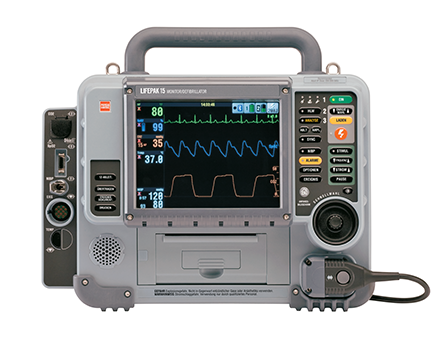
| Properties | Details |
|---|---|
| SFDA Classification | Class IIb |
| Purpose of Use | A medical device designed to analyze the heart's rhythm and deliver an electric shock to a patient with ventricular fibrillation to restore the heart's rhythm to normal. Ventricular fibrillation is the arrhythmia most often responsible for sudden cardiac arrest Survival of sudden cardiac death decreases by 7-10 percent per minute without immediate CPR or defibrillation An automated external defibrillator (AED) is a device used to treat cardiac arrest, a life-threatening condition in which the heart suddenly stops beating properly. By sending an electric shock to the heart of a person in cardiac arrest, the device restores the heart's normal rhythm. |
| Work Location & End-User | Place of work: All wards of the hospital End user: medical staff and nurses |
| Parts & Accessories | • Electrode pads • battery • capacitor • Healer • A cuff to measure blood pressure (NIBP) • Oxygen saturation (SpO2) sensor • Electrocardiogram (ECG) • Adaptor • Paper Records Printer |
| Operation | The defibrillator uses mains power or a large internal battery to charge a large capacitor between 5 and 400 joules. Two metal "Paddles" (electrodes) are attached from the defibrillator, and are placed on either side of the patient's chest. The energy stored in the capacitor is then discharged from paddle to another through the patient's chest, causing the heart to beat regularly again, and defibrillators are built into ECG monitors and ECG recorders to more accurately display and document ECG waveforms continuously. |
| Common Problems | • Battery problem • timer delay |
| Manufacturers | • Philips • HeartSine Technologies, LLC • Cardiac Science Corporation • Defibtech, LLC • Physio-Control, Inc. |
| Sources | • Saudi Food and Drug Authority • OSHA • Springer Handbook of Medical Technology • Flinders Biomedical Engineering Equipment Orientation |
